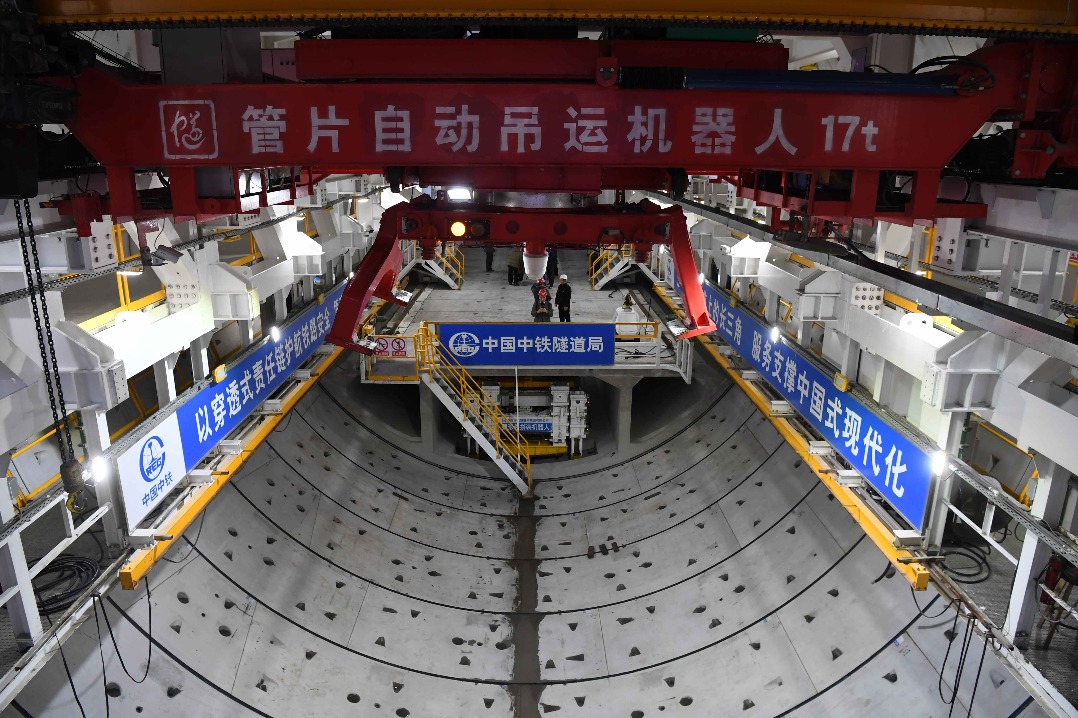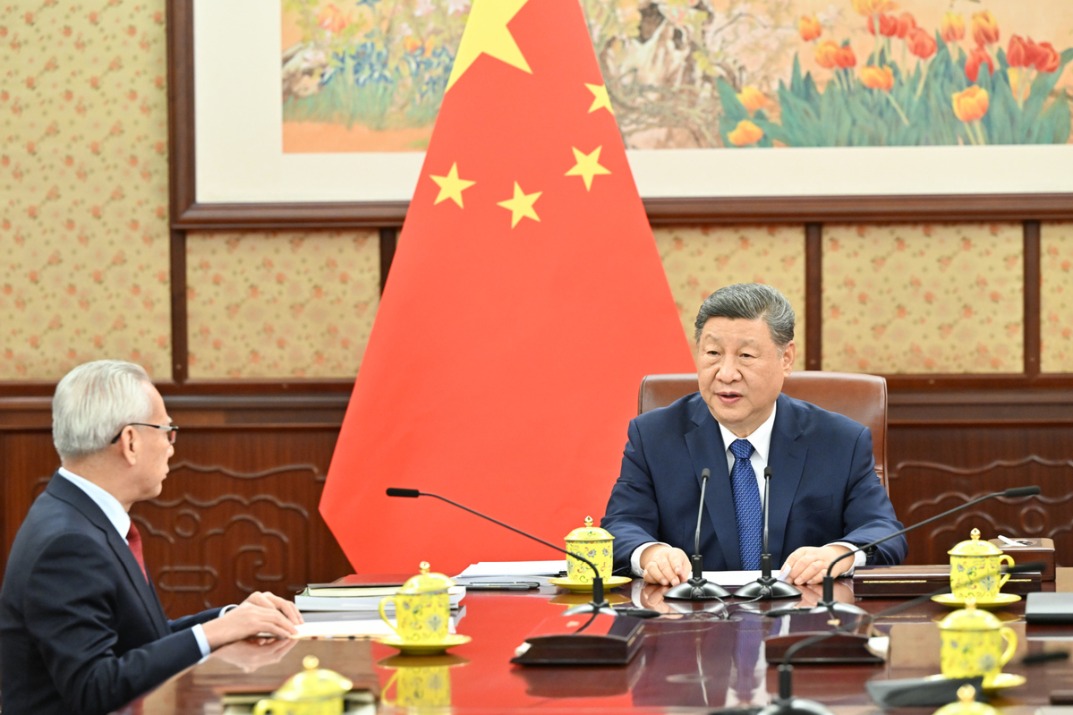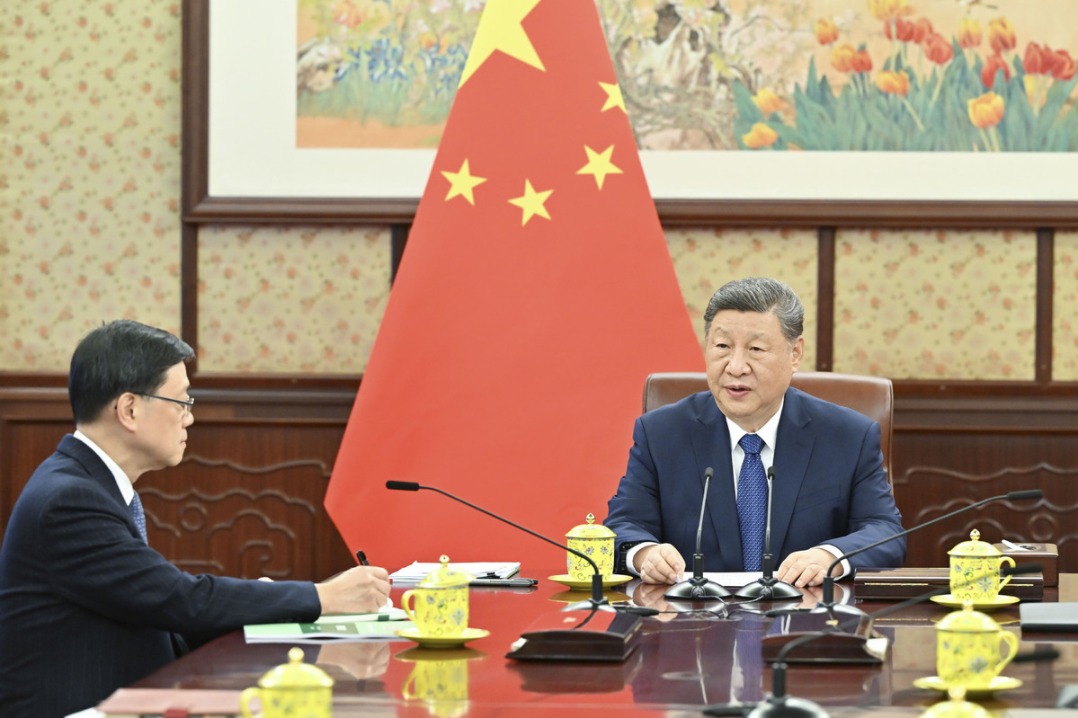Exhibition highlights a tale of two cities
Show explores links between Beijing and Nanjing in the Ming era, Wang Kaihao reports.

What's in a name? For people it is a sense of identity and heritage. The same for cities. For instance, only two Chinese cities contain the word jing, meaning "the national capital", in their names.
Beijing (the "northern capital") and Nanjing (the "southern capital") the Jiangsu provincial capital, are both steeped in history. But one pivotal point was an event in 1420 during the Ming Dynasty (1368-1644).
That year, upon the completion of an ambitious urban construction project, Zhu Di, also known as Emperor Yongle, announced moving China's capital from Nanjing to Beijing. Perhaps, this decision changed the direction of Chinese history: Beijing has been the national capital since then with only a short interlude from 1927 to 1949.
To mark the anniversary, the exhibition Nanjing to Beijing: 600th Anniversary of Moving the Capital of Ming Empire opened at the Capital Museum in Beijing on Jan 17 and was scheduled to run through June 28. Among the exhibits, 267 cultural relics were selected from museums in the two cities.
The Capital Museum is temporarily closed due to the coronavirus outbreak, but the exhibition continues in a digital format. Albums and introductory texts of some highlighted exhibits and the galleries are showcased on the official website of the museum.
"We'd like to guide visitors back to the early years of the Ming Dynasty to see how the foundation of a country's lasting stability and prosperity was built," Gao Hongqing, curator of the exhibition, says. "People can have a panoramic understanding of that dynasty."
Symbolizing the craftsmanship involved in transferring the capital are thick blocks placed at the entrance of the exhibition hall. Each block, weighing about 15 kilograms, has the artisan's name as well as the supervisor's carved into it. If any of the blocks had a fault those who were responsible could be immediately identified.
According to Gao, the blocks were made by a traditional formula of mixing sticky rice and kaolin, a special variety of clay used to make top-tier porcelain, to ensure solidity and firmness.
After Zhu Yuanzhang (Emperor Hongwu), the first emperor of the Ming Dynasty, established the empire in Nanjing in 1368, toppling the Mongol Yuan Dynasty (1271-1368), he organized about one million laborers to construct his mighty city.
For the ongoing exhibition, some exhibits on loan from museums in Nanjing reflect that booming period. As the emperor's mausoleum in Nanjing has remained untouched, recent archaeological discoveries, all over the city, provide an intriguing glimpse of the lifestyle of high officials at the time.
Findings from the glittering underground world-gold ingots, jewels and jade-portray the earliest days of a newborn empire.
Zhu Yuanzhang died in 1398, leaving the throne to his eldest grandson, Zhu Yunwen (Emperor Jianwen). The young ruler and Zhu Di, the founding emperor's fourth son, who was stationed in Beijing, soon found themselves in bitter dispute.
In 1399, Zhu Di rebelled and took Nanjing after a four-year civil war. The whereabouts of Emperor Jianwen has remained a mystery, and rumors said he escaped overseas. Some historians speculated that this was the reason why Zhu Di ordered the great mariner Zheng He to lead a giant fleet on overseas expeditions.
"And as the threat brought by Mongols was still imminent in the north, Zhu Di decided to move the capital north to better safeguard the frontline," Gao explains.
Zhu Di began his long project constructing a Forbidden City in Beijing. That 720,000-sq-meter compound is known as the Palace Museum today. It functioned as the imperial palace until 1912.
Through the exhibition, Gao reminds people "there was an even bigger Forbidden City" in Nanjing, which Zhu Di copied. That original compound, which was a royal palace until 1420, is believed to have covered more than one million square meters. However, it was gradually reduced to ruins by conflicts.
After the capital was moved to Beijing, Nanjing was still considered the "secondary capital" by the Ming Dynasty government. Nanjing Mandarin, which has tonal and pronunciation differences from today's Mandarin, based on the Beijing dialect, continued to be the official language throughout that dynasty.
"Moving the capital in 1420 didn't mean the end of Nanjing's prosperity," Cao Zhijun, director of the Nanjing Museum Administration, says. "Instead, thanks to a symbiosis of the two cities, China's stability to govern a huge territory spanning from the north to the south was secured at that time."
According to Gao, the change of capital in 1420 marked a split between the political and economic centers.
"Moving the capital saw a population surge in Beijing," he says. "And the Grand Canal (connecting Beijing and the Yangtze River Delta) also supplied the capital with abundant goods from the south. Nanjing continued to enjoy prosperity as a transportation crossroads."
Consequently, a focus of the exhibition emphasizes broader development in the mid-Ming Dynasty benefiting different social strata. A blue-and-white porcelain vase, depicting ripe plums, may indicate the literati's cultured taste. A group of colorful glazed bricks portraying elephants shows Sino-foreign cultural exchanges, and gilt Buddhist statues also reveal religious adherence during that dynasty.
Bai Jie, head of the Capital Museum, says: "We can also see how Beijing has gradually become a metropolis."
In Beijing, in spite of the fascinating Forbidden City, which will also embrace its 600th birthday this year, and the vast hutong area-the ancient residential communities-most sections of the Ming Dynasty city wall in the capital have been demolished. However, the city walls in Nanjing are well preserved though the palatial compound they protected no longer exists.
"Perhaps, if we could put the two cities together, we could have a complete example of how an ancient Chinese capital was constructed," Gao says.





Today's Top News
- Crossing a milestone in the journey called Sinology
- China-Russia media forum held in Beijing
- Where mobility will drive China and the West
- HK community strongly supports Lai's conviction
- Japan paying high price for PM's rhetoric
- Japan's move to mislead public firmly opposed






























